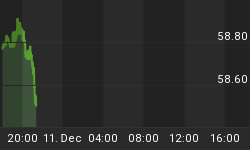If you intend to pursue US sector rotation investing with ETFs, you probably want to be sure that your choice of funds covers the entire US market without unintended gaps or overlaps in your exposure.
There are many funds with sector focus that pose a bewildering menu. On top of that is inconsistent labeling of levels by index companies, and fund descriptions using labels that are inconsistent with the labels used by the indexes they follow.
There are two industrial classifications systems competing for your attention. The older one from S&P and MSCI is called GICS (global industry classification standard). The newer one from Dow Jones and FTSE is called ICB (industry classification benchmark).
They each have 10 top levels, called "sectors" by GICS and called "industries" by ICB. Beyond the top level both the names and number of classes differ.
The GICS structure consists of 10 sectors, 24 industry groups, 67 industries and 147 sub-industries. The ICB structure consists of 10 industries, 19 supersectors, 41 sectors, and 114 subsectors.
The 10 top levels are very similar, but not the same. The consumer category is the most different between systems, as the table shows. They are not fungible. You would need to combine the two consumer categories of each for them to be equal.

Other differences exist. For example, ICB puts coal in their mining component of Materials, whereas GICS puts coal in the oil, gas and consumable fuels component of Energy.
When you read about or plan sector weights or industry weights, make sure you know which system, GICS or ICB, is referenced. The weights are not the same for each.
Note that in both systems, telecommunications equipment manufacture is in the Technology category, while telecommunications service provides are in the Telecommunications category.
The State Street sponsored sector ETFs are based on the 10 sector GICS system, but they have only 9 sector funds. State Street combines the Technology and Telecommunications sectors into a single ETF called Technology (XLK).
The Vanguard sponsored sector ETFs are also based on the GICS system, but they use all 10 sectors, keeping Technology (VGT) and Telecommunications (VOX) separate.
The Barclays sponsored sector ETFs are based on the ICB system, and they use all 10 industries of that system, but call them sectors, presumably because of common usage established years earlier by the GICS system.
The names of the sectors as they relate to top level sector ETFs from the three key sponsors are shown in the table, which also shows the broad US index fund from which the sector funds are derived.

Beyond sector funds are a plethora of subsector funds of varying degrees of granularity. If you use them, know whether they are based on GICS or ICB and read the structure of each classification system, so that you will know whether and to what degree you will overlap the holding of top level funds you may also own.
The links to the classification structures are:
Three practical ways to use top level sector funds are:
- own the broad index fund as a core position and then selectively overweight your portfolio toward a particular sector by buying some of that sector to supplement your core broad index position
- own all of the top level sector funds, instead of a core broad index fund, in whatever allocation policy weight you determine (presumably at or deviating from the overall market weights), then reallocate or rebalance from time to time
- do not own the core broad index fund; do own those sectors for which you are confident; and do not own those for which you are not confident (most aggressive and highest risk of the three approaches).
Subsector specialty funds, should probably only be used as "spice" here and there in conjunction with a core broad index fund.
Whatever, you do, a little bit of reading can help a lot. Relying on labels alone could give you a false sense of security. Be particularly careful when using sector funds from more than one sponsor to make sure you do not have unintended gaps or overlaps.
















